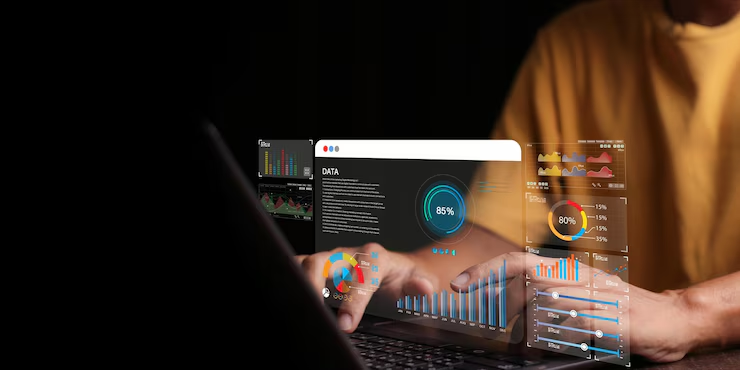Home -> Enhancing User Engagement for a Social Media Platform through Advanced Data Analytics and API Development
Marketing & SALES
Enhancing User Engagement for a Social Media Platform through Advanced Data Analytics and API Development

Focus Areas
Advanced Data Analytics
User Engagement Optimization
API Development & Integration

Business Problem
A rapidly growing social media platform experienced stagnant user engagement despite an expanding user base. While the platform collected vast amounts of behavioral and interaction data, it lacked the analytical capabilities to derive actionable insights or deliver personalized content. In addition, siloed systems and limited API infrastructure hindered data sharing between teams and with third-party developers. The company needed a scalable solution to unlock engagement drivers, increase content relevancy, and enable real-time personalization.
Key challenges:
Limited Behavioral Insights: Existing analytics tracked basic metrics (likes, comments) but failed to uncover deeper user engagement patterns.
Fragmented Data Systems: User data was spread across multiple databases without a centralized analytics layer.
Underutilized Developer Ecosystem: The absence of robust APIs limited third-party app development and content integrations.
Static Content Delivery: The platform lacked the intelligence to personalize content feeds or interactions in real time.
Low Feature Adoption: New features rolled out on the platform saw low uptake due to irrelevant targeting and lack of usage data.
The Approach
Curate collaborated with the platform’s product, engineering, and analytics teams to build a data-centric engagement engine and an extensible API infrastructure. The solution focused on extracting deeper behavioral insights, enabling dynamic content personalization, and fostering a more connected third-party developer ecosystem—all aimed at boosting long-term user engagement.
Key components of the solution:
- Discovery and Requirements Gathering: Curate facilitated discovery workshops with internal stakeholders to prioritize outcomes. Key goals included:
Centralize user behavior data across interactions, content types, and engagement patterns.
Build machine learning models to understand content preferences and user journeys.
Develop APIs for content recommendation, interaction tracking, and external app integration.
Enable real-time personalization across feeds, notifications, and feature prompts.
Data Analytics and API Solution Implementation:
Data Consolidation: Unified user activity logs, profile metadata, and engagement metrics into a cloud data lake (AWS S3 + Redshift).
Behavioral Segmentation: Applied clustering and sequence modeling (e.g., K-Means, LSTM) to group users by interaction patterns, content interests, and time-of-day activity.
Engagement Scoring Models: Developed algorithms to assign scores to users based on session length, repeat visits, and feature usage trends.
API Development:
Recommendation API: Delivered personalized content based on user affinity models.
Engagement Analytics API: Allowed teams to access real-time user metrics and event triggers.
Developer Portal API: Enabled external apps to integrate with the platform’s content and notification engine.
Content Personalization Engine: Dynamic feed adjustments based on user clusters, preferences, and trending content.
Process Optimization and Real-Time Activation:
A/B Testing Platform: Implemented experimentation pipelines to test content layouts, notification timings, and feature placements.
Dynamic Notification Triggers: Triggered contextual messages (e.g., trending topics, friend activity) using event-driven APIs.
Usage Analytics Dashboards: Real-time dashboards in Tableau and Looker monitored KPIs like retention, feature adoption, and content dwell time.
Stakeholder Engagement & Change Management:
Cross-Functional Collaboration: Involved product managers, data scientists, and engineering leads in iterative design sprints.
Training and Adoption: Conducted onboarding sessions for internal teams on using APIs and interpreting analytics dashboards.
Feedback Loops: Used user and developer feedback to improve API endpoints and content scoring algorithms.
Business Outcomes
Increased Daily Active User Engagement
With personalized feeds and content recommendations, daily session durations and in-app interactions rose substantially.
Higher Feature Adoption and Retention
Real-time personalization nudged users to discover and use new features relevant to their interests and behavior patterns.
Scalable Developer Ecosystem
New APIs enabled faster development of plugins, integrations, and tools that enhanced the platform experience and ecosystem growth.
Sample KPIs
Here’s a quick summary of the kinds of KPI’s and goals teams were working towards**:
| Metric | Before | After | Improvement |
|---|---|---|---|
| Average session duration | 3.1 minutes | 5.2 minutes | 68% increase |
| Daily active user engagement | 48% | 66% | 18 basis point improvement |
| Feature adoption rate | 27% | 59% | 52% improvement |
| Time to content personalization | Static | Dynamic | Dynamic engagement achieved |
| Developer API usage | Limited | 4X increase | Expanded 3rd-party integration |
Customer Value
Faster Feature Discovery
Personalized prompts drove quicker adoption of new capabilities and tools.
Empowered Developers
External teams leveraged APIs to innovate faster and extend platform functionality.
Sample Skills of Resources
Data Scientists: Developed engagement scoring models, user clusters, and personalization logic.
API Developers: Built scalable APIs and handled authentication, throttling, and documentation.
Product Analysts: Mapped user journeys and derived metrics to inform content strategies.
DevOps Engineers: Supported API deployment, monitoring, and CI/CD workflows.
UX Designers: Worked on dynamic content presentation and interaction design for higher engagement.
Tools & Technologies
Data & Analytics: AWS Redshift, Snowflake, Tableau, Looker
Machine Learning: Python (scikit-learn, TensorFlow, Keras), SageMaker
APIs & Development: RESTful APIs, GraphQL, Postman, Swagger
Personalization Tools: Feature flags, Segment, Braze
Monitoring & DevOps: AWS Lambda, CloudWatch, Jenkins, GitHub Actions
Collaboration: Figma, Jira, Slack, Notion

Conclusion
By integrating advanced data analytics with scalable API infrastructure, Curate helped the social media platform unlock the full potential of its user data. The result was a more engaging, personalized, and adaptive user experience that not only increased user activity and feature adoption but also empowered internal and external teams to innovate faster. This transformation positioned the platform for long-term engagement growth and a competitive edge in the crowded social media landscape.
All Case Studies
View recent studies below or our entire library of work

Enhancing User Engagement for a Social Media Platform through Advanced Data Analytics and API Development
Marketing & SALES Enhancing User Engagement for a Social Media Platform through Advanced Data Analytics and API Development Focus Areas Advanced Data Analytics User Engagement

Enhancing Digital Visibility and Mobile Experience for a Marketing Firm
Marketing & SALES Enhancing Digital Visibility and Mobile Experience for a Marketing Firm Focus Areas Digital Presence Optimization Mobile Experience Design SEO & Performance Analytics

Data-Driven Audience Segmentation to Boost Customer Retention
Marketing & SALES Data-Driven Audience Segmentation to Boost Customer Retention Focus Areas Data Analytics Audience Segmentation Customer Retention Business Problem A subscription-based e-commerce company was

Enhancing Customer Engagement with Data Analytics for a Marketing Agency
Marketing & SALES Enhancing Customer Engagement with Data Analytics for a Marketing Agency Focus Areas Data Analytics Customer Engagement Marketing Performance Optimization Business Problem A


